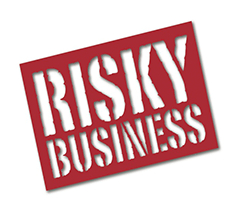Understanding risks seems like an easy tasks. When we speak of risk we think about the likelihood of being harmed or better said the possibility of losing something of value. Thousands of experts are paid to study and report on how risky chemicals, treatments, drugs or threats really are. So, you might expect that effective risk communication is just a matter of explaining what they know in a way that members of the public can understand. Sadly, the realities of risks just don’t work that way, in fact neither of the above two points is as obvious as it seems. So how do we actually define risks and how do we deal with them?
When it comes to deciding what represents a big risk, most people are primarily influenced by emotional factors than by well-documented hard facts. Actually, you could go so far as to say that the risks that get most attention in the media and evidently people’s minds are not the risks that kill or harm the greatest number of people. When speaking of risks it is important

Another misconception we tend to have is that harm is caused by a single cause. In reality there are many contributory factors that lead to harm actually occurring. When thinking about it you suddenly see that thousands of factors that are not usually considered risk factors actually are exactly that. It can even start to seem as if everything is a possible risk or a hazard. The most common idea then is to try to avoid risk by changing a part of the situation, forgetting that this can result in exposing yourself to another different risk. In this way, you can see how trying to stop one risk can in itself be risky.
The simple definition presented before is suddenly much more difficult. So how do we deal with risks if it is such a complex matter? It becomes apparent that there actually is no concrete answer to that. Understanding risks is a critical step in understanding how you want to deal with them. Decisions surrounding risk have a number of consequences and should not be taken lightly. Clearly, every decision point has a cost associated with it, and these costs need to be weighed against the losses. But the reality is that not all risks are known. There is uncertainly in everything that we do, thus when risks can be quantified, it is extremely important to take these serious and make the appropriate decision. Only then can we start to take the first responsible steps into our future.
